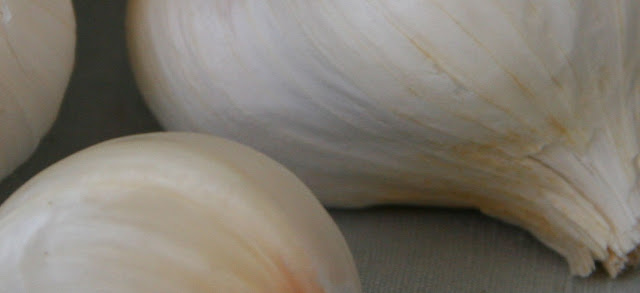Advanced Drawing and Painting
Notice how a portion of this photo was cropped to make an interesting composition. When planning your abstract painting refer to the principles and elements of design. Which principles and elements are you going to concentrate on? Look below at the caption under the abstract image to see how elements and principles of design are used to describe the work. Create a thumbnail sketch of your abstract painting to work on the composition.
 |
| Depth is created by having an object in the lower-left portion of the composition. There are different values and lines on the garlic that help create the form of the garlic. The lines on the garlic create a pattern and movement. The negative space in the lower-right leads you into the center of the image. There is a dark area of negative space in the background which adds interest and contrast again creating depth. The different textures on the negative and postive space adds interest. The cast shadow brings you into the center , meeting the light mass (hill-like shape), that leads your eye to the back...thus creating movement. |









